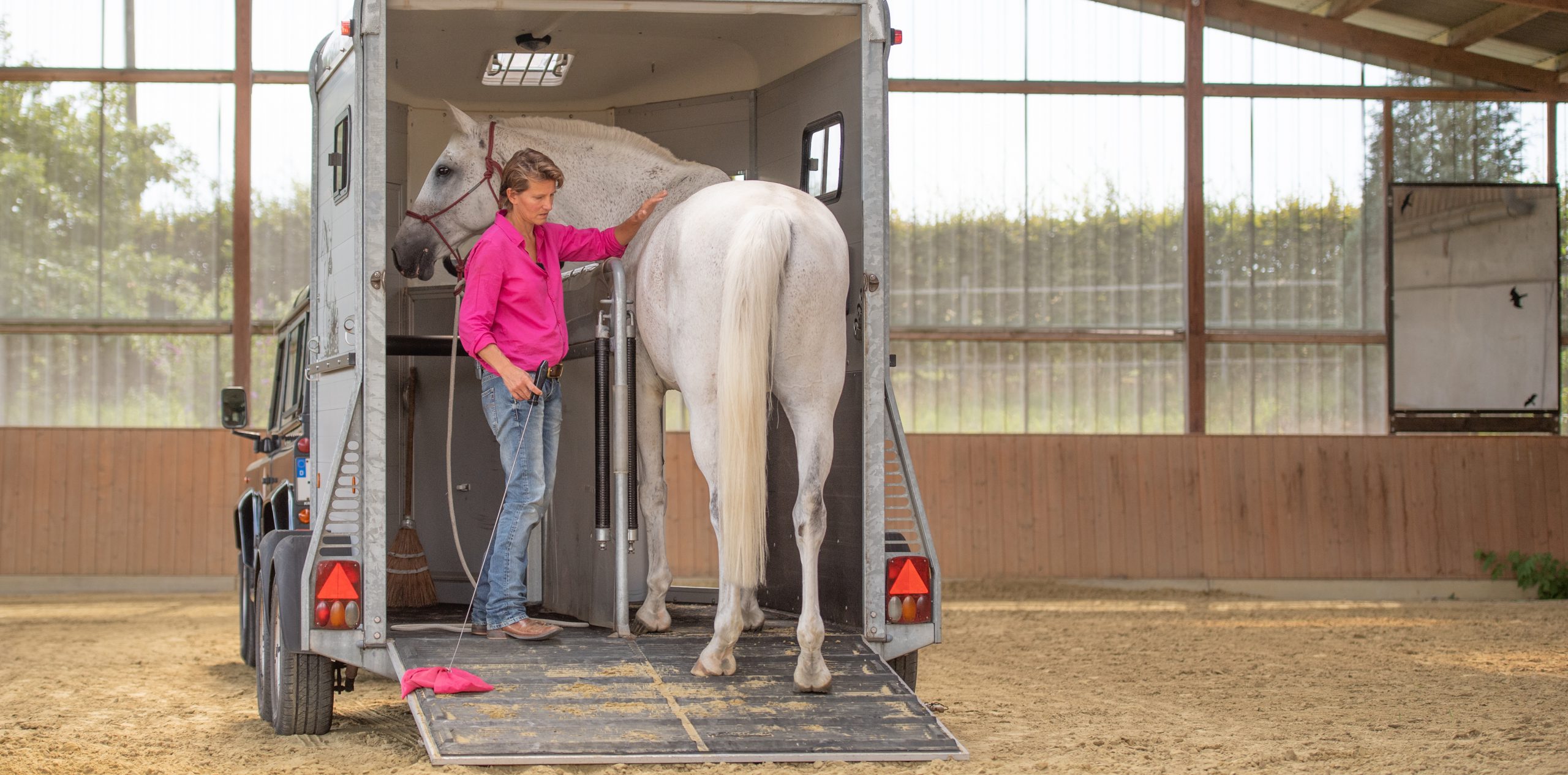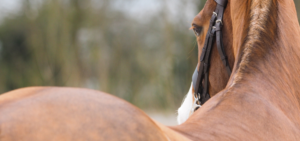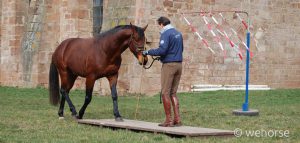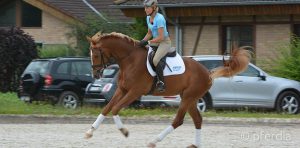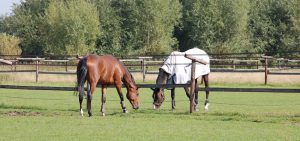Imagine your friend leading you up to a porta-potty-sized box, and telling you to get in. What would you say? How might you feel? What would you be thinking? And most importantly, would you get in?
Perhaps it would depend on the friend, or the context of the situation, or a number of some such things, but this analogy is a relatively appropriate illustration of what your horse feels the very first time you ask him to load in a trailer.
Summary
- Trailer Training: Loading Horses with Patience and Trust
- Fear Avoidance & Remediation
- A Whole Slew of Factors: What Makes Loading Horses Such a Pain?
- Other ideas for consideration
- Taking it One Step at a Time
- Together, Anything is Possible
Trailer Training: Loading Horses with Patience and Ttrust
As you begin teaching your young horse how to load, there are several key elements to bear in mind to ensure a successful outcome:
1 – Using body language, communicate energy that is both calm and controlled. You don’t want your horse to associate anxiety with the trailer. As you are loading horses, ensure that your body is relaxed but purposeful, that your voice is calm, but confident.
2 – Be patient. Don’t rush the process. It will take some time for your horse to adjust to and accept the notion that the trailer is a safe place. Let him learn at his own pace. Loading horses takes time, and loading horses with trauma takes even more. Make sure that you allow for enough time for every horse to taste success without ever using fear or intimidation.
3 – Instant gratification. As you find yourself loading horses, particularly when teaching this skill as a new task, reward any and all efforts, however subtle, that your horse makes towards moving into the trailer. This involves immediate release or removal of pressure when your horse exhibits the desired behavior. A single step forward should immediately result in a bit of slack in the lead rope. By doing this, you are communicating a job well done; you are immediately communicating to your horse that he is doing exactly what you want him to do.
4 – Positive reinforcement and praise. Fewer things in the learning process are of greater importance than positive reinforcement. Not only will this reinforce each skill you teach, but praise also works to strengthen your bond and rapport with your horse. Talk to him. Use a gentle voice. Utilize verbal praise each step, along the way. The more positive associations your horse acquires throughout the process, the more positive his perception of the trailer will be.
5 – Practice. Don’t expect mastery after one trial and allow yourself extra time if you plan on traveling. Don’t ever force yourself or your horse to try to rush through the process. If you’ve had a pretty grueling workout day, use the following day to practice loading procedures. This type of regimen allows your horse’s body to rest and recuperate while simultaneously engaging him in mental exercise and focus training. Practice may not always make perfect, but it certainly always moves you closer to it.
Fear Avoidance & Remediation
The other side of loading horses, or really, correctly loading horses and beginning a training regimen would involve a horse that has also experienced learned behavior; however, this case would involve the antithesis of a proactive approach. This horse would have learned to fear the trailer, having experienced an accident or injury or some other trauma that resulted in the development of an aversion to the loading process.
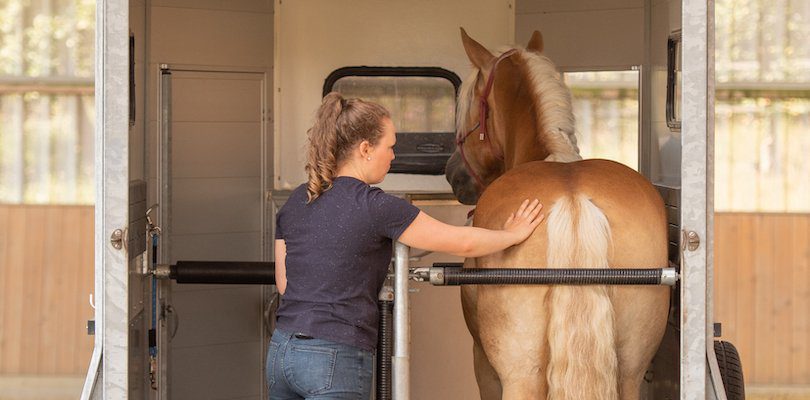
A Whole Slew of Factors: What Makes Loading Horses Such a Pain?
There are a variety of other reasons horses may be reluctant to load and why loading horses in general has a reputation for being incredibly frustrating. These include, but are certainly not limited to:
- Horses as innate social, herd animals; reluctant to leave the herd
- No foundation—the horse hasn’t received thorough and or effective groundwork training
- Negative experiences loading in the past
- Poor training pertaining to inconsistent loading techniques, forceful loading, or bad driving
- Having been forcefully loaded in the past; trauma from a trainer whose approach to loading horses relies exclusively on fear, force, and intimidation
- Added pressure of equine vision being slow to adjust from light to dark coupled with forceful or aggressive loading techniques and poor driving, this would be a near impossible task for a horse to accomplish! This case is far more difficult, at least comparatively speaking, to deal with. However, it is by no means impossible.
Like all good things on the ground, it is best to go back to the basics. If your horse has developed a fear of loading, you must then teach him that it is perfectly safe, and to accomplish that you must work both slowly and deliberately.
Taking it One Step at a Time
When loading horses, or reteaching the ‘difficult’ horse to load the right way there are a few other ideas that are worthy of your consideration:
1 – Desensitization: Ultimately, you will want to spend enough time approaching and simply being proximate to your trailer that your horse’s anxiety will be able to dissipate. Approach the vehicle calmly and slowly. Be patient. If your horse backs away, feel free to walk away from the trailer and simply approach it again. This is not only an opportunity for practice, but another method of fear reduction.
2 – Developing Confidence: Encourage your horse’s efforts and intrigue clearly and immediately. If he takes even a single step onto the ramp, immediately release the pressure and reward him with verbal and physical praise. Celebrate the baby steps if he shows curiosity towards the vehicle or moves towards the loading ramp. Every effort towards moving into the vehicle when you are loading horses is a job well done!
3 – Small doses: Do not overload your horse with practice sessions. Start with short practice sessions, maybe five to ten minutes, but no more. As your horse gradually recaptures his confidence, slowly increase the time you spend practicing this skill.
4 – Don’t Force a Practice: If you are having a terrible day, or your exhausted, or short-tempered, do not force a training session! This can be a recipe for disaster. Only work on the skills necessary when loading horses when you are in the appropriate mindset to do so. Attitude is Everything.
Other ideas for consideration:
- Ensure that the ramp is level on the ground, so it doesn’t rock as he walks up
- Park your trailer in such a way that when you are practicing, he is facing his paddock or other comfort zone
- Remove any unnecessary clutter and make the space inside the trailer as open and as inviting as possible
- Keep your trailer clean and neat, add treats or a bit of hay, add warm soft bedding—any and all positive associations your horse makes with the vehicle will only help you both in the long run!
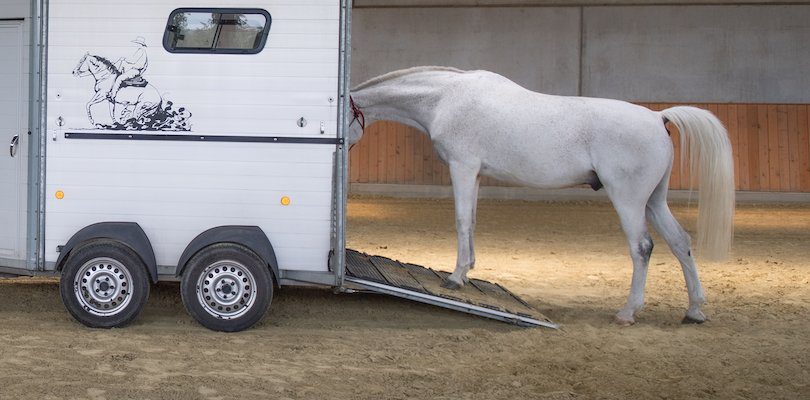
Together, Anything is Possible
Regardless of whether you are feeling overwhelmed by the prospect of teaching your young horse how to load, or if you are struggling with the difficult horse or simply struggling with loading horses in general, know that every horse can be taught how to load in a trailer. It will take a bit of practice, and mistakes will be made, but in the end, you are both going to be successful. And remember, as long as you’re in it together, you will be just fine. Because in the end, it’s never really about the destination, rather the moments that shape us are the memories we make on the journey.

